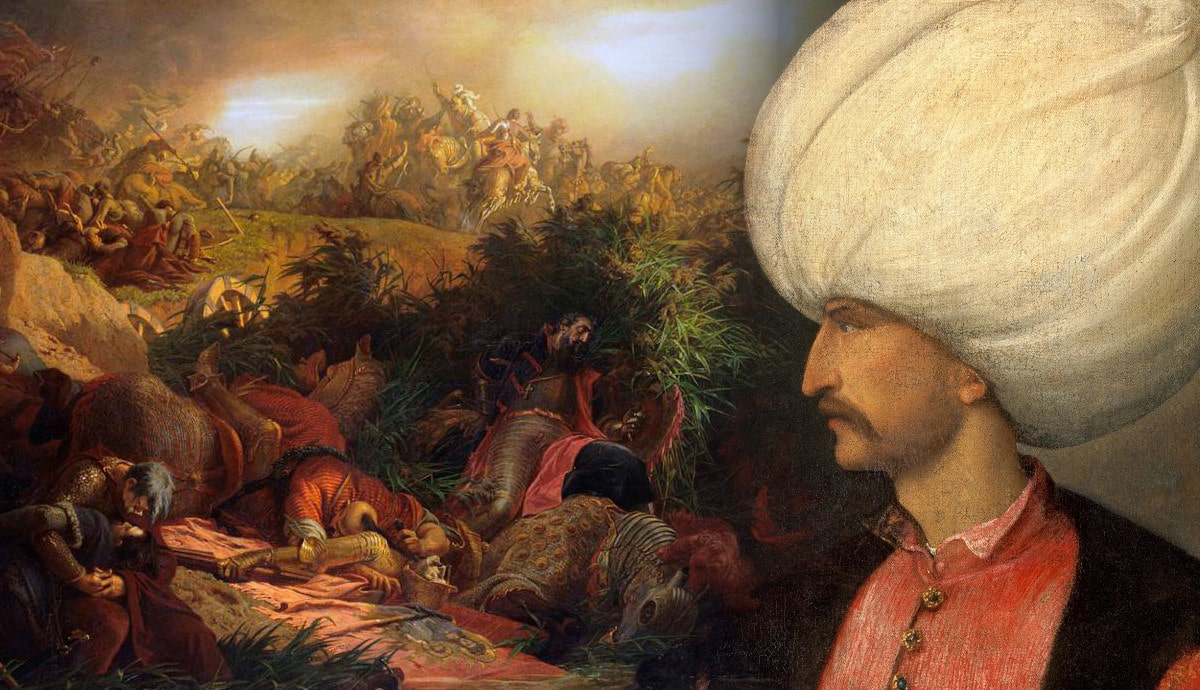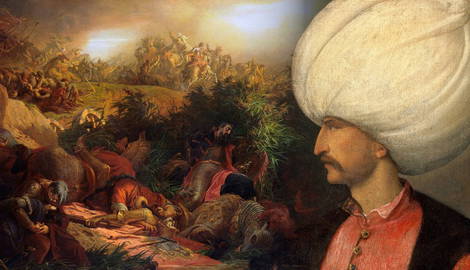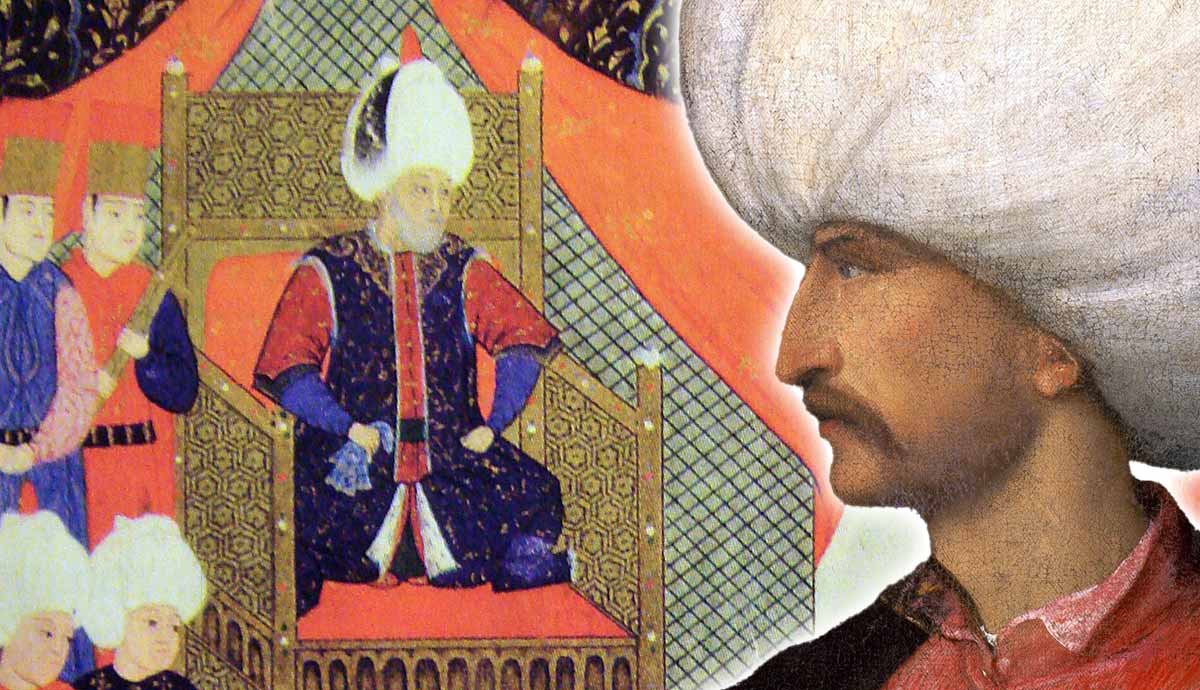
Suleiman the Magnificent, known more formally as Suleiman I, or Suleiman the Lawgiver in Turkish, was the tenth Sultan of the Ottoman Empire. His reign spanned 45 years, from 1520-66, and he oversaw a crucial era of the Ottoman Empire’s history in the mid-16th century. On top of being one of the most formidable leaders of all time, he stood out among other leaders, even given the competition he faced from his European contemporaries: Henry VIII of England, Francis I of France, and Charles V, the Holy Roman Emperor. This article explores exactly why he was considered so magnificent.
Early Life of Suleiman the Magnificent (1494-1520)

Suleiman was the son of another great Ottoman Sultan, Selim I (r. 1512-20), who, despite his short reign, oversaw a huge expansion of the Ottoman Empire, including the conquest of the Mamluk Sultanate of Egypt from 1516-17. During Selim I’s reign, the Ottoman Empire increased in size by 70%, and by the time of his death in 1520, it spanned 3.4 million square kilometers (1.3 million square miles) from Algeria to Moldavia.
Suleiman was born in November 1494, and although the date is often disputed, 6th November is generally agreed upon. His father, as mentioned above, was Selim I, and his mother was a woman called Hafsa Sultan. Her origins are unknown, although it is clear that she converted to Islam at some point during her lifetime.
Aged 7, Suleiman studied at the Topkapi Palace in Constantinople, where he undertook numerous subjects including history, science, literature, theology, and military tactics — something which greatly contributed to his later life.
When he was aged 17, he was appointed governor at Kaffa, a port on the Crimean coast of the Black Sea, perhaps most famously remembered for its role in spreading the Black Death across Europe 150 years before Suleiman was born.
Suleiman the Magnificent in Europe

Upon his father’s death in 1520, Suleiman ascended the throne, becoming the tenth Ottoman Sultan. He wasted very little time in organizing military conquests to further expand the territory of the Ottoman Empire, and in 1521 began the first of a series of campaigns against Christian Europe, starting with Belgrade.
In mid-May 1521, Suleiman started to amass the Ottoman forces and they headed for Christian-held Belgrade. The Hungarian army (as they were in control of Belgrade) was unable to counterattack against the Ottoman forces, and during the conflict succumbed to Suleiman’s forces. The battle raged from 25th June – 29th August and resulted in an Ottoman victory. This victory was also hugely significant for the Ottoman Empire itself: it was the furthest west it had ever expanded in its history.
The following year, Suleiman targeted the Greek island of Rhodes. In 1480, under the leadership of Mesih Pasha, the Ottoman Empire had been unsuccessful in taking the island stronghold from the Knights Hospitaller, who were a medieval Catholic military order originating from the Crusades.
However, under Suleiman’s leadership, Ottoman forces besieged the island successfully. On 26th June 1522, 400 Ottoman ships arrived on the shores of Rhodes to begin the siege. Two days later, Suleiman arrived to personally take charge, arriving with an army of 100,000 men.

The siege involved heavy gunfire and cannon fire, in a show of advanced warfare in the early modern period, and the castle walls eventually began to crumble. The siege lasted until 22nd December, when the representatives of Rhodes accepted Suleiman’s (rather generous) terms, including that Suleiman promised not to turn any churches into mosques.
The victory was hugely significant for the Ottoman Empire as the capture of Rhodes meant that the Ottomans controlled almost the entire eastern Mediterranean, making communications and trade much easier with Constantinople and the Levant. But Suleiman looked further west, into Europe.
In 1525, Francis I of France (r. 1515-47) had been defeated at the Battle of Pavia by the forces of the Holy Roman Emperor, Charles V (r. 1519-56). Francis was imprisoned and forced to sign the Treaty of Madrid, which ceded parts of Francis’ territory to Charles, as well as promising his sister in marriage to the Emperor.
The treaty was signed on 14th January 1526, and Francis was released from prison. However, as soon as Francis had crossed the border back into France, he formed the League of Cognac with other European leaders, in order to dethrone Charles V. And who did he turn to in the East? Suleiman.

Francis asked Suleiman to make war on the Holy Roman Empire, and the road from Turkey led through Hungary to reach the Holy Roman Empire. Fortunately for Francis and Suleiman, relations between Hungary and the Ottoman Empire had soured after Suleiman’s conquest of Belgrade in 1521, and by 1526 they were at an all-time low. As a result, this gave Suleiman the chance to attack Hungary later that same year, which led to the Battle of Mohács on 29th August 1526.
Initially, although outnumbered, the advantage was with the Hungarians; their troops were well-rested and knew the territory, whereas the Ottomans had just marched across Eastern Europe in the scorching summer heat. However, Suleiman’s troops were much more disciplined than the Hungarians, who were also supported by a small contingent of Polish soldiers.
The Ottoman troops cut through the Hungarian defenses, forcing King Louis II of Hungary to flee. On his retreat, he was thrown from his horse into a river and died, weighed down by his armor. He was only 20 years old. Approximately 14,000 Hungarian soldiers were killed. Yet Suleiman did not stop there. Two days later, he watched from his golden throne as 2,000 Hungarian prisoners were executed.

Again, this battle shows how Suleiman the Magnificent earned his epithet: the Ottoman Empire had penetrated further into Europe than it had ever been in its entire history. It also ended the Ottoman-Hungarian Wars, which had raged in some form since 1366, as well as ending the Jagiellonian dynasty of Hungary with the death of Louis II. Furthermore, it signified the collapse and partition of medieval Hungary, which was to last for several centuries, split between the Ottoman Empire, the Principality of Transylvania, and the Habsburg Monarchy.
Suleiman had achieved all of this by the time he was just 32 years old! He formed a Franco-Ottoman alliance with Francis I in 1536, which was tactically one of the finest moves Francis made as king.
Following two failed campaigns in Vienna in 1529 and 1532, Suleiman saw an opportunity to redeem himself in the early 1540s when a conflict erupted again in Hungary. In 1541 and 1544, the Habsburgs attempted to lay siege to Buda but were repelled by the Ottomans, who also captured two Habsburg fortresses in the process. As a result, Ferdinand and Charles were forced to sign a humiliating five-year treaty with Suleiman.
For Ferdinand, this meant that he had to pay a fixed yearly sum to Suleiman the Magnificent for the Hungarian lands he continued to control, while also renouncing his claim to the Kingdom of Hungary. Significantly, the treaty referred to Charles V as “King of Spain” rather than “Holy Roman Emperor”, leading Suleiman to identify as the real “Caesar”.

In a matter of a few short years, Suleiman had penetrated into Europe, almost reaching Austria. He had taken back Hungarian territory, denounced Charles V as the Holy Roman Emperor, and formed a Franco-Ottoman alliance that was to last for three centuries.
Suleiman Beyond Europe

It was not just Europe that Suleiman was concerned with. Suleiman turned his sights east and looked to trade with the Mughal Empire, based in South Asia. In 1538, he captured the port of Aden in Yemen from the Portuguese, and later in the year he had solidified it as a base from which the Ottomans could trade in Asia. With its strong trade routes to both the Red Sea and the Indian Ocean, the Ottomans enjoyed a significant level of trade with the Mughals in the sixteenth century: Suleiman is even reported to have traded six documents with Akbar the Great (r. 1556-1605), the third Mughal Emperor.
North Africa was another area where Suleiman focused his attention, as he desperately wanted territory that would link the Ottoman Empire together. From 1538-59, the Ottoman-Portuguese Wars raged through North Africa and the Red Sea, as both fought for the best trading locations. When the 21-year conflict finally came to an end in 1559, the Ottomans had successfully expanded their influence in the Red Sea, while the Portuguese maintained control of the Persian Gulf. However, significantly for the Ottomans, they took the weakened Adal Sultanate into their territory, which further enhanced Ottoman expansion into Somalia and the Horn of Africa, helping to link the North African Ottoman territories closer together.
Even further afield, in 1564, the Ottomans received a request for support against the Portuguese from Aceh, in modern-day Sumatra, Indonesia. The Ottomans complied and sent a fleet over. Again, this demonstrates how Suleiman earned his title: his influence was known from Austria to Indonesia. Suleiman the Magnificent was certainly one of the most important and globally recognized names of the sixteenth century.

Persia had been the thorn in Selim I’s side, and Suleiman the Magnificent was determined to make sure it was not the thorn in his side, too. The enemy was a rival Muslim faction, the Safavid Dynasty. In 1533, Suleiman led an army into Asia Minor, where he occupied Tabriz and took Bitlis without resistance. The following year, they made a push for Persia, and found the Safavids ceding territory instead of engaging in pitched battle. By 1535, Suleiman entered Baghdad and restored the tomb of Abu Hanifa. Hanifa was the founder of the Hanafi school of Islamic law, which the Ottomans followed.
Suleiman’s second campaign in Persia was from 1548-49, but the Safavids once again refused to enter into pitched battle and used scorched earth tactics, exposing the Ottomans to the harsh winter conditions of the region. The Ottomans left in 1549, with territory in Azerbaijan, Van, and Georgia.
Suleiman the Magnificent’s final campaign into Persia was his most successful. In 1553, he recaptured Erzurum and crossed the Upper Euphrates River, gaining territory in northern Persia. The Peace of Amasya was signed in 1555, which defined the borders of the Safavid and Ottoman Empires. Armenia and Georgia were equally split between the two, while the Ottomans also gained Iraq (granting them access to the Persian Gulf).
The Culture of the Ottoman Empire Under Suleiman

The Ottoman Empire thrived under Suleiman the Magnificent, as he presided over what came to be known as the “Golden Age of the Ottoman Empire”. Unlike many of his Islamic and Christian contemporaries, he protected the Jewish communities of the Ottoman Empire. In the early 1550s, he introduced a firman (royal mandate) which denounced blood libels against the Jews, as his favorite doctor was a Spanish Jew called Moses Hamon.
Suleiman the Magnificent also developed a distinctly Ottoman culture. While his father wrote poetry solely in Persian, Suleiman wrote in Persian and Turkish, and some of his verses have become famous Turkish proverbs, including:
Everyone aims at the same meaning, but many are the versions of the story.
Suleiman also helped to develop the architecture of the Ottoman Empire and oversaw the construction of 300 monuments during his reign. He oversaw the restoration of the Dome of the Rock and the Old City Walls in Jerusalem.
Death and Legacy of Suleiman the Magnificent

On 6th September 1566, while en route from Constantinople to Hungary to lead another expedition, Suleiman died. Ultimately, the Ottomans were successful in the Battle of Szigetvár, and Suleiman’s death was kept secret from the troops so as not to affect their morale. His body was sent back to Istanbul where he was buried.
Suleiman the Magnificent was indeed magnificent for many reasons. A successful military leader, he gained territory in Europe, Africa, and Asia, while also maintaining and developing a successful culture in the Ottoman Empire. He protected its Jewish citizens and expanded the Empire to the largest area it had ever been, dominating the seas from the Mediterranean to the Red Sea to the Persian Gulf.
He truly was a magnificent leader and thoroughly deserving of his title.










